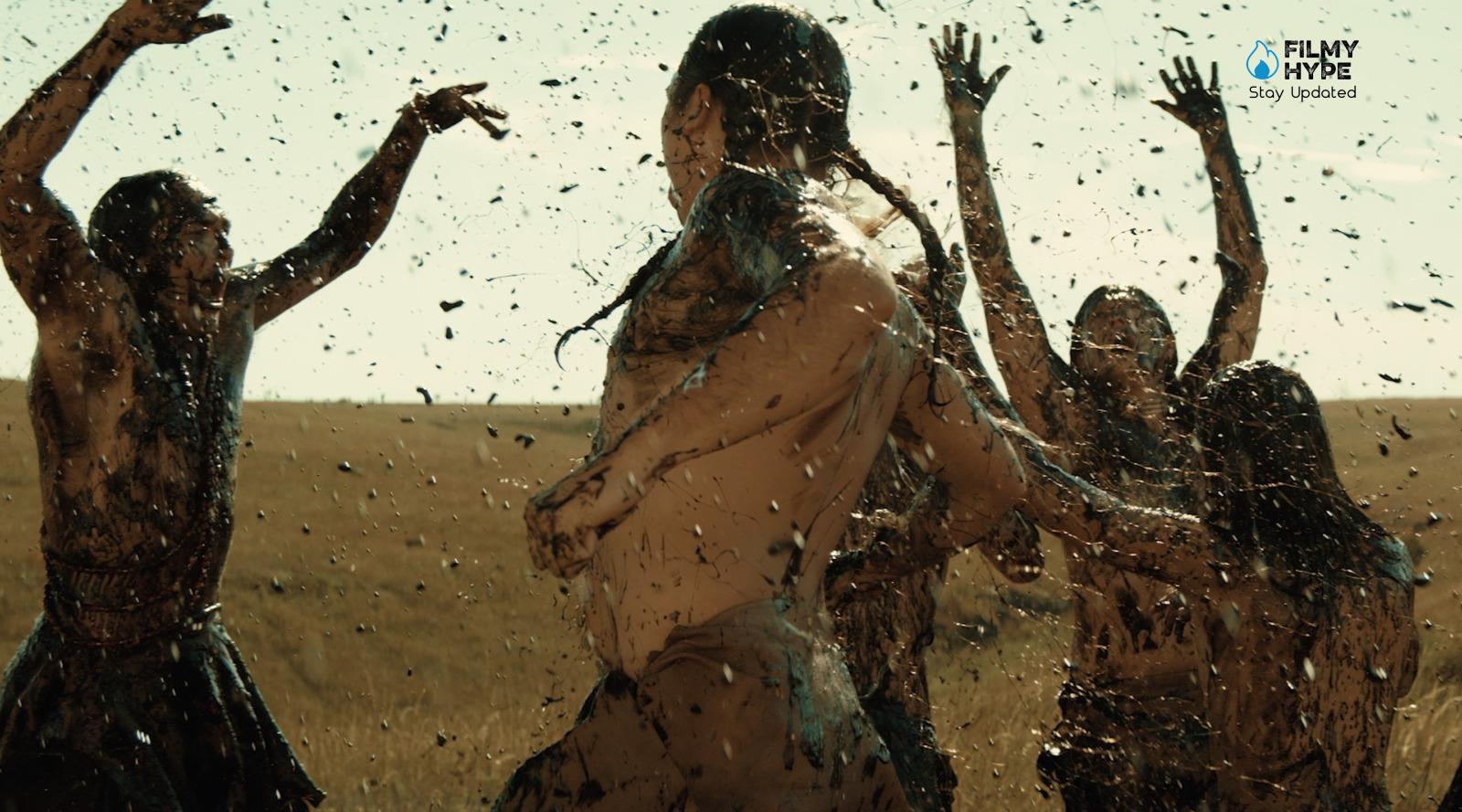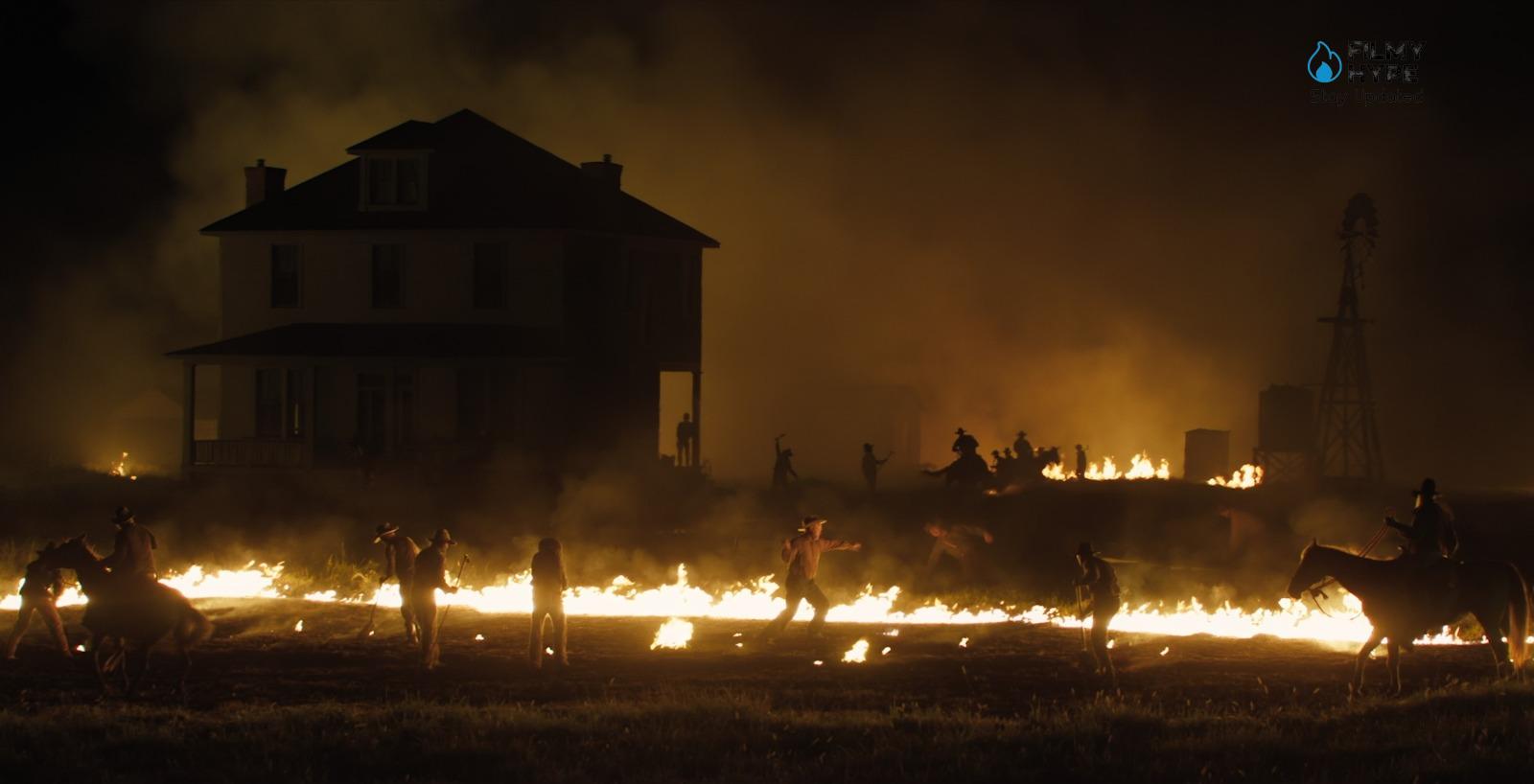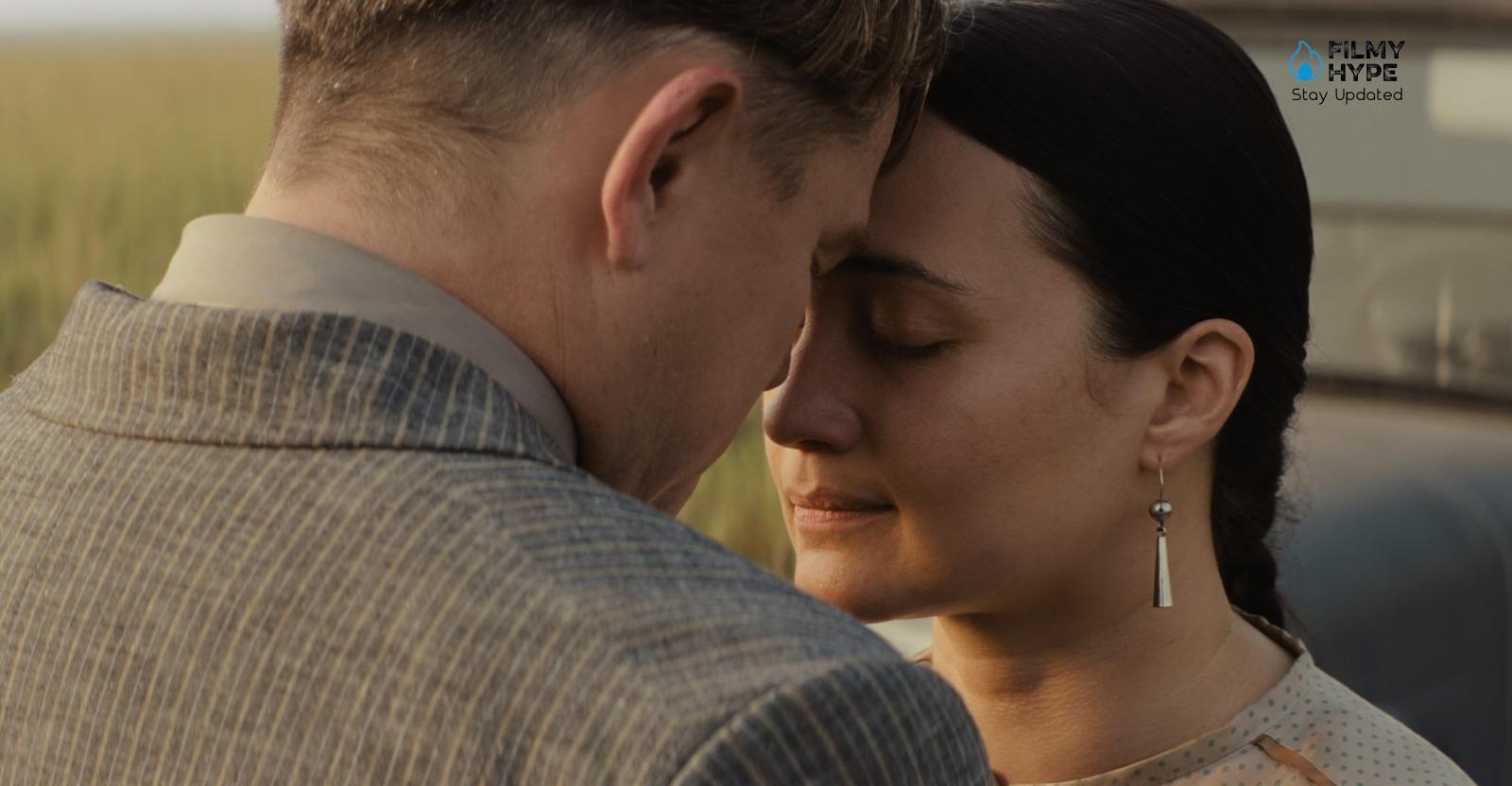Killers of The Flower Moon Ending Explained: Explanation and Meaning of Cameo At the End
Killers of The Flower Moon has finally arrived in cinemas, Martin Scorsese’s ambitious and majestic feature film, which for the occasion has both his fetish actors, Leonardo DiCaprio and Robert De Niro, interact on the screen (you can read more about it on our review). A film that, like many of the director’s previous ones, meditates on family, time, and justice, also adding a reflection on the evolution of audiovisual media. In the film’s conclusion, all these elements come together magnificently, a lightning catharsis after just over three hours of plots and murders. It is a mix of ingredients that we want to talk about in our explanation of the ending of Killers of The Flower Moon. This article contains spoilers! Going against the most pessimistic forecasts, Martin Scorsese has managed to hold his own even in the face of Taylor Swift herself.

Killers of The Flower Moon has had more than respectable results at both the US and Spanish box office, despite being a three-and-a-half-hour film with non-commercial approaches. Among the attractions of the film is that of bringing together Leonardo DiCaprio and Robert De Niro, 30 years after their first work together (This Boy’s Life) and for the first time under the orders of the genius of Little Italy. On the other hand, Killers of The Flower Moon is based on a terrible true event: the attempted extermination of the natives of the Osage tribe after the discovery of oil on their lands made them the richest human group per capita on the planet. Scorsese’s film (based on the book by David Grann) captures that horrifying story in great detail. And, in addition, it adds an epilogue that, although it may seem fanciful, is also based on real events.
Killers of The Flower Moon: The Story Plot
The 1920s, Oklahoma. War veteran Ernest Burkhart arrives in Osage County where he is reunited with his powerful uncle William Hale. Here he meets and falls in love with Molly, part of the wealthy Osage Native American community, affected by a series of mysterious murders. Scorsese’s Western brings to the screen a true story, reconstructed in David Grann’s essay: that of the genocide of the Native Americans of the Osage tribe. After being driven off their lands several times, the Osage are assigned a hostile land, where survival is difficult. In the 1920s, however, this patch of land where nothing grows turns out to be rich, very rich in oil.
Thanks to the agreements with the oil companies, the Osage Indians became very rich, dividing the proceeds from the sale of black gold. However, their wealth attracts looters, swindlers, and murderers around them. All white men are deeply convinced that natives do not deserve their wealth, as “non-Americans”. Behind good intentions, a handful of white men begin to enter the Osage families by marrying their daughters, while the suspicious deaths of young members of the tribe follow one another. Among the wealthier families is that of Mollie (played by Lily Gladstone), a native who suffers from diabetes. Mollie is sharp, wise, and austere. She knows that the blanket of her tribe that she carries on her shoulders is a target, and she knows that the whites-only want the money from her, but she still decides to move Ernest (played by Leonardo DiCaprio), a good-looking veteran but not exactly brilliant in reasonings. With only her husband as an ally, Mollie will see death tightening around her and her family, while the authorities do nothing, and it seems impossible to understand the perpetrator of so many crimes.
What Happens in the Killers of The Flower Moon Finale?
After years of criminal activity, Ernest Burkhart and his uncle William King Hale are arrested by the FBI for multiple murders against the Osage population (a terrible true story that inspired the film). The former initially agrees to testify against the latter, only to change his mind at the suggestion of Hale’s lawyer, and then decides to return to his initial position after learning that one of his sons died of whooping cough. Hale tries to have him killed, in vain. Ernest tries to reconcile with his wife Mollie, but she finally abandons him when he denies trying to poison her through his daily insulin injections. A radio show serves as an epilogue, replacing the usual summary writings on the characters’ fates: Ernest and Hale were both sentenced to life imprisonment but were later released and lived without contact with each other until their deaths. Mollie, after divorcing Ernest, died of diabetes in 1937, at the age of fifty, and was buried with her Osage relatives. The obituary, the radio commentator specifies, did not mention the murders at all.
From one Medium to Another?
The film begins with the discovery of oil on the Osage territory, the phenomenon that transformed their land into the criminal empire of William King Hale, and between that scene and the actual beginning of the gangster plot, with Ernest’s return from the war in Europe in 1918, there is a summary of Osage history and culture in the form of period films, material that reproduces the stylistic features of silent cinema with the philology that we usually associate with Scorsese, already accustomed to this practice (just think of The Aviator, where the photography emphasized the passage of time by slightly altering color schemes based on the Technicolor conventions of the decades in question).

For the conclusion, however, once again resorting to creative methods to avoid classic captions or narrative voices, he chose to entrust the final details to a radio play, one of those with which he, born in 1942, five years after Mollie’s death, will have grown up together with the cinema, the main pastime allowed to a boy who, like the female protagonist of the film, was debilitated by the disease (but he ended up recovering from childhood asthma) and therefore limited in his free time activities. The evolution of entertainment – with a possible allusion to the popularity that the thriller genre based on true crime cases still enjoys today, in the cinema, on television, and in the form of podcasts – goes hand in hand with that of the criminal family of Hale, recounting almost the entire first half of the American twentieth century.
Giving the Osage a Voice!
As explained by the people directly involved in the production, the film was initially very different in terms of concept (for one thing, DiCaprio was expected to play the federal agent Tom White and not the evil Ernest), and the advice of the Osage population influenced the final shape of the project, making the victims of Hale’s machinations and their exploitation by whites a much more integral part of the plot, to give them the voice they had been denied for decades. This makes it even more significant not only that the film opens and closes with scenes of Osage rituals, but also the cameo that Scorsese himself has cut out, his most substantial role in one of his films since Taxi Driver: it is he who comments on the final events at the end of the radio play, explaining, in particular, Mollie’s fate. With one detail in particular: there was no mention of the murders committed by Hale’s men in the obituary of the woman, who was also a victim of the intrigues of the “king” of Osage County. Eight decades later, first with David Grann’s book and then with the film, that oversight has been rectified. Talking not only about the murderers, as the title says, but also about those who suffered at their hands.
The Ending of Killers of The Flower Moon Makes More Sense Than You Imagine?
After more than three hours simmering his overwhelming study on the nature of Evil and, in particular, the multiple and very abject ramifications of the American original sin (that is, the systematic and dehumanizing mistreatment to which his expansionist desires subjected the people natives) well into the 1920s, Martin Scorsese and his co-screenwriter Eric Roth give us a double climax in an intimate key: on the one hand, the terrible final confession of Ernest Burkhart (Leonardo DiCaprio) before the judge; on the other, the last words that his wife Mollie (Lily Gladstone) will ever say to him. A certainly devastating closure for a story of violence that, as already happened in The Irishman (2019), completely distances itself from any fetishistic view to focus on its moral and human consequences, on the trail of loneliness and sadness that these terrible acts leave behind. behind him.

All in all, Killers of The Flower Moon still needed to completely close its story after that emotional climax, something that Scorsese and Roth could have done through one of those useful white text-on-black background epilogues that most films based on in real events they usually resort to explaining to us what happened to each character. Instead, the film relies on its founding text, the excellent historical essay written by David Grann (and published in our country by Random House), to embroider a coda that avoids falling into the commonplace while adding a new layer of meaning to the whole. As Grann explains in his book, in 1932 the FBI “began to collaborate with the radio program The Lucky Strike Hour by adapting some cases. ”The murders of the Osage Indians was one of the first episodes (…) The program concluded: ‘Another story that comes to an end, and the moral is the same that emerges from the rest of this series (…) When it comes to watching “Who was the smartest, (the criminal) was no match for the federal agent in Washington”.
The first version of the script that Roth shared with Scorsese reproduced the same structure as the book, dividing his time evenly between the criminals and the federal investigation that ended the Reign of Terror in the small town of Fairfax, Oklahoma. The original plan was for DiCaprio to play Tom White, the Bureau of Investigation (later FBI) agent whom Jesse Plemons finally plays, but something didn’t quite fit in this preliminary version. As the director himself told Time magazine, “From a certain point, I realized that I was making a movie centered on white men”. Instead of placing White at the center of an official white savior narrative where the voices of the Osage community were diluted in favor of a routine “who-done-it” scheme, Scorsese decided to put the focus and dramatic agency on the character of Gladstone and his family, while DiCaprio accepted the challenge of getting into in the skin of one of the riskiest characters of his career.
It is necessary to take this process into account to understand the epilogue of Killers of The Flower Moon in all its magnitude. In it, Scorsese seems to reflect on how these North American tragedies have been told until now: ignoring the suffering of the innocent and the feeling of impunity that moved the guilty (derived from systemic xenophobia bordering on genocide) to construct myths for the greater glory of law enforcement. Fables that transformed the carnage into a schematic story of good and evil to, in some way, atone for the collective sins of an entire nation. And that is in the best of cases since the references that the film makes to Tulsa are not at all coincidental.
In addition to drawing our attention to how and by whom a country’s history is told, the final minutes of the film offer a brilliant meditation on the inevitable transformation of reality into a story. A century after they were perpetrated, the Faifax murders seem like a twisted but distant fairy tale: its victims and perpetrators are today characters played by actors, their world is a set, and their pain is experienced in the form of fiction. That is why it is so revealing that it is Scorsese himself who appears on stage to tell us the end of Mollie Brown: it is she, the real person behind the Oklahoma legend that she became, who has moved him to tell this story. With Killers of The Flower Moon, the filmmaker wanted to restore his dignity to a people decimated by the greed of a handful of white rats but remind us that History is founded on the tears and blood of very real people.



